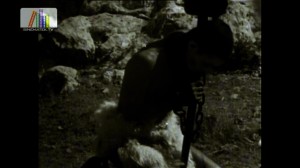
“Ruhi Su ve Rahmi Saltuk türküleri eşliğinde yoksulluk ve emek sömürüsünü ve mücadeleyi, direnişi farklı, ilginç bir kurgu ile anlatmış. 13 dakikalık 1969 yılı koşullarını düşünerek izlemek gerekiyor.” Sinematek.tv: http://sinematek.tv/kordugum-1969-2/ (15 Oct 2019).
“Accompanied by Ruhi Su and Rahmi Saltuk’s folk songs, the film tells the story of poverty, struggle, and resistance in a different way, with an interesting montage. This 13-minute-long film requires audiences to acknowledge the contexts of the year 1969 in viewing.” Sinematek.tv: http://sinematek.tv/kordugum-1969-2/ (15 Oct 2019).
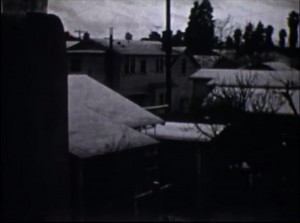
Footage of residential Los Angeles after a snowstorm in 1932. Opens with an Amateur Cinema League leader and a stop-motion animated title.
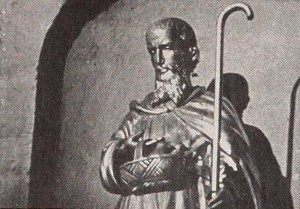
"In L'Ile d'Orléans, Radford and Judith Crawley cross a bridge and come back. But they cross a bridge with a difference, because what they see and what they make us see on the other side of that bridge is the inner essence of a withdrawn people, who proudly conserve the memory of things past in the realities of things here. The Maxim Award winner opens a door into a region of Eastern Canada — the Island of Orleans — where old French and old Canadian folkways are lived placidly and with dignity. Actually, the camera crosses a very modern bridge at the film's beginning and returns over it at its end. But, once in L'Ile d'Orléans, in the hands of the two Crawleys, this Twentieth Century box of wheels and gears spins a tale of yesterday, even if it pictures just what its lens sees today. The landscape and the old houses, some of them there for more than two hundred years, set the decor, after which we come to the dwellers in this separate Arcady. They do, with a delightful unconsciousness of being observed, the things that make up their daily lives, and, when invited to take notice of the visitors, they do this with a fine courtesy that is the very refinement of hospitality. Mr. and Mrs. Crawley devote a liberal part of their footage to a careful study of home cheese making, in which camera positions and a large number of close shots turn what might have been a dull and factual record into something of cinematographic distinction. The highlight of the Crawleys' film is a leisurely and sympathetic watching of what is the highlight of life in l'Ile d'Orléans — the country Sunday. We see different churches, all of a general type, but each with its essential neighborhood individuality. Finally, one of these is singled out for an extensive camera visit. Bells ring and the country priest is shown with his gravity and solemn courtesy. The countryside comes to life with its church bound inhabitants who wind over the simple roads slowly yet purposefully and with the assurance of those who know that the land is theirs as it was their fathers'. With such pictures of everyday life, scored with appropriate music for double turntable showing, Mr. and Mrs. Crawley have etched an epoch, in a record which can stand on its own feet with good genre description in any art form. With not a single concession to sentimentality — as should be the case in honest work — but with a sure feeling for that which reaches out for the finer emotions, they have shown us what they found across the bridge. Here is personal filming at its best." Movie Makers, Dec. 1939, 608-609.
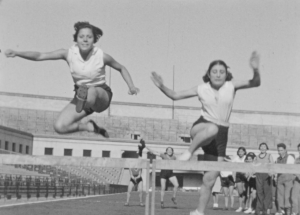
Documental sobre el Club Femení i d'Esports de Barcelona que recull les úniques imatges en moviment d'aquesta institució pionera. Documentary about the Women's and Sports Club of Barcelona that collects the only moving images of this pioneering institution.
"La Reata depicts a lost art, that of making a lariat or lasso. The cowhide is stretched and staked out on the ground to dry. Then, with a long circular cut, a rawhide rope is made, cured, then braided to form the rope used in this fast disappearing custom. A leisurely pace gives the film much of its charm, plus a narrator who is in no rush - a welcome change" PSA Journal, Aug. 1967, 36.
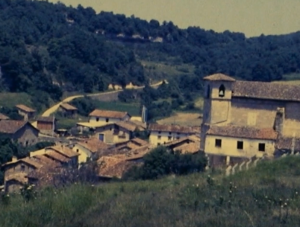
Corto documental sobre el pueblo de Izkiz , en el que el narrador describe de forma poética el pueblo entre planos de paisaje y arquitectura de este mismo. Mientras se recitan varias poesías aparecen imágenes de casas, tejados, laderas, ventanas, calles, la iglesia, casas abandonadas, animales, personas, niños –jugando o andando en bicicleta –, personas mayores, escenas de campo y vida campesina, escenas vacacionales, invernaderos, flores, insectos, el río, etc.
Documentary short about the town of Izkiz, in which the narrator describes the town in a poetic way while the film shows shots of landscapes and architecture. While several poetries are recited, we see images of houses, roofs, hillsides, windows, streets, the church, abandoned houses, animals, persons, children –either playing or riding bikes–, elderly people, countryside and country life scenes, vacation moments, greenhouses, flowers, insects, the river, etc.
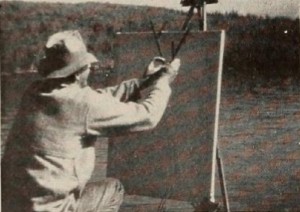
"In Lake Superior Landscape, the artist, Dewey Albinson, demonstrates his technique of landscape painting from the bare canvas stage to the climactic moment when the glowingly finished product is first exhibited. Shot by Elmer Albinson, the film is marked by vivid closeups and many changing angles, which help immeasurably to achieve a comprehensive sense of growth as the painting progresses. Producer Albinson understands the relationship that exists between the object, the artist and the painting; he has used his camera with accuracy and sensitivity to pass this understanding on to those who see his film." Movie Makers, Dec. 1947, 538.
"The tranquil countryside of east Lancashire belies its sometimes turbulent history, and Pendle Hill, overlooking the area, is to this day associated with the infamous witch trials of 1612. In this short colour film by amateur filmmaker Kenneth Prior, we visit the locations of the notorious events, in a county that saw more of an upsurge in supposed witchcraft activity than any other in the north." (BFI Player)
‘Record of the building of a house. On screen title states "A specification for building a modern house in Dorset". The films proceeds through the following processes - Site inspection by architect and surveyor, clearing the site, laying trenches and adding concrete, bricklaying, placement of joists and lintels, installing outside staircase, building flat asphalted roof, foreman keeping an eye on works, adding steel balustrades, architect regularly inspecting, installing interior partition walls, installing internal staircase, electrically polishing downstairs wooden floors, painting, viewing the finished house’ (EAFA Database).
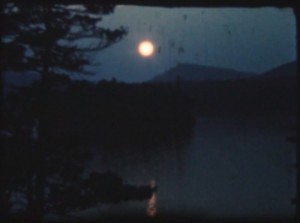
"Land of My Dreams, Joseph J. Harley, ACL, will tell you, is a simple record of fun and friends. As such, it is an attractive piece of Kodachrome, colorful in its camera work, leisurely in its pace (400 feet, 8mm.) and frankly sentimental in its outlook. Lake Saranac and the Harley summer cottage comprise the land of Joe Harley 's dreams, although his myriad friends of ten years' standing play a large part in that Elysium. You see them throughout the film, going about their fishing and boating, picnics and swimming with an infectious zest and good humor. The record is climaxed with a detailed presentation of a grand communal party, at which each of the guests is required to put on some sort of skit or bit of entertainment." Movie Makers, June 1944, 246.
Note of warning: the "communal party" referenced in the description above includes a performance in blackface.
Total Pages: 79